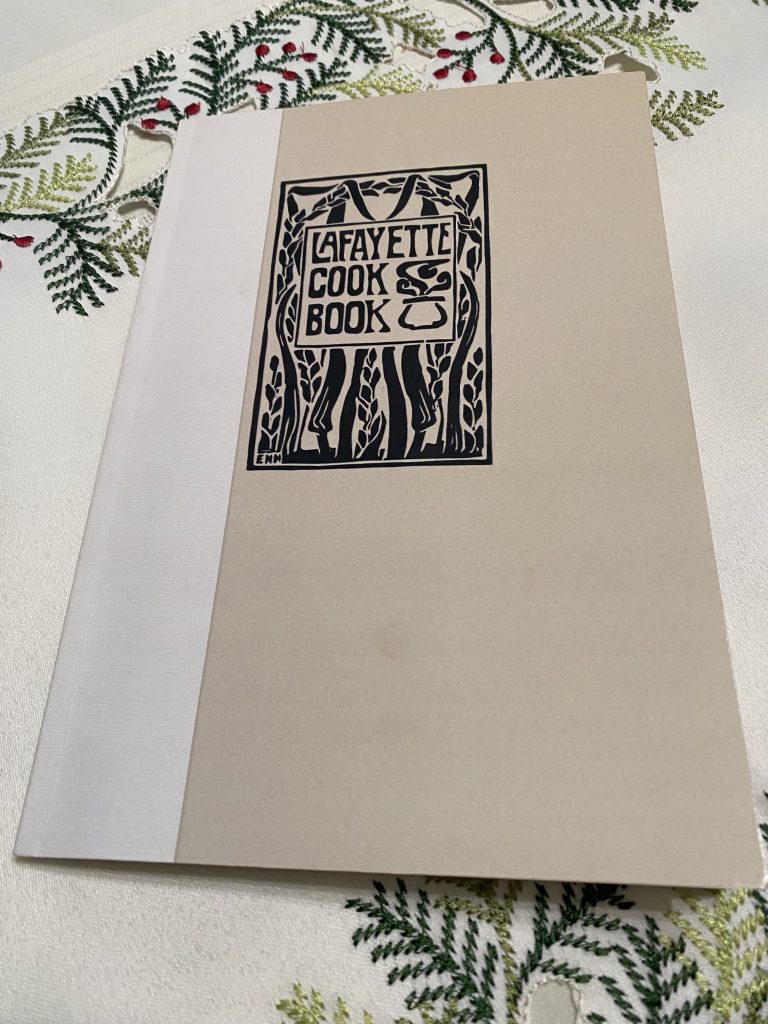Regional History Preserved in a Cookbook
Published 12:08 pm Monday, December 18, 2023

- The 1922 “Lafayette Cookbook”. Cover artwork done by Miss Emily Huger, Art teacher at Southwestern Louisiana Institute.
When you grow up in a family whose name is as synonymous with food as that of the Patout family, despite whatever chosen path you take in life, an appreciation of your culinary heritage permeates and flavors your world.
Such was the case for Gerald Patout, whose interest in Louisiana food and hospitality developed at a young age in his grandfather’s hotel, the Hotel Frederic, a landmark on Main Street in New Iberia from 1912 to the early 60’s. It was here in the hotel restaurant, “Gene and Gerald’s,” operated by his father and uncle, that he spent time and was immersed in the cuisine of South Louisiana. His later studies in Information Science, Education, Social Sciences and Instructional Media led him to jobs which reinforced his interest in research, evolving into research in the area of food history, particularly that of our own Louisiana food history. His skilled research acumen was honed through studies at Columbia University, LA State University, Old Dominion University and University of Louisiana, Lafayette. His work as Head Librarian and Corporate Information Specialist for Domino Sugar Corporation in New York, and in numerous other libraries around this state, gave him a unique perspective into culinary research.
Trending
As Curator of the Library Collection and Head of Research Services at the Historic New Orleans Collection in the French Quarter, his work focused on collections of state food publications and led him to the discovery of a little-known recipe book, published in 1922, by the female congregants of First United Methodist Church of Lafayette, LA.
The women of the church, which was known at that time as the Methodist Episcopal Church South, came together under the direction of Ruth Ryan, Home Economics teacher at SLI, now the University of Louisiana at Lafayette. They compiled the best recipes of their family and friends, and as most cookbooks originated in New Orleans during that period, this rare publication became a predecessor to many other regional cookbooks found in our kitchens today.
The collection of recipes cannot be described as Cajun, as some of the contributors were not of Acadian descent, and some were from out of state, many in the field of education at SLI, Southwestern Louisiana Institute. Local businesses paid for advertisements in the cookbook, and introducing the page on sauces was an ad for a ready-to-wear clothing and furnishing company. Another ad on the same page was for a local restaurant that was open from morning to midnight. The sauces found on the adjacent page, white sauces, mint sauce, béchamel sauce and sauce piquant are still used to flavor our dishes today. The béchamel sauce, spelled differently from our present-day spelling of bechamel, was also different in that in addition to the butter and flour used, it also included a white stock from cooking veal, peppercorns, a bay leaf, a sliced onion, carrot, and scalded milk. The incorporation of Morning Glory Butter and lard figured prominently in many of the recipes in the book.
One might consider making some of the recipes from the cookbook, for instance the one for Petites Pois Delicieux. The ingredients added to the can of green peas sounded reasonable enough, except for the one-half cup of chicken gravy. Unfamiliar to this writer was the recipe for brains au gratin, which called for beef or calf brains, hard boiled eggs, chopped boiled ham, onion, and lard. Nowhere was there a mention of cheese in the ingredients, but toasted breadcrumbs were used as a topping for the dish. A recipe for divinity candy, a sugary, sweet confection of old, with its success dependent on weather temperature and humidity, came with instructions to place pieces on paraffin paper, no doubt a precursor to our wax paper.
Reading old cookbooks can be likened to opening a time capsule from the past, as is found in the “Lafayette Cookbook.” I am grateful to have been privy to a glimpse of that past through Gerald Patout’s generous sharing of his knowledge and passion for preserving our Louisiana culinary heritage.




